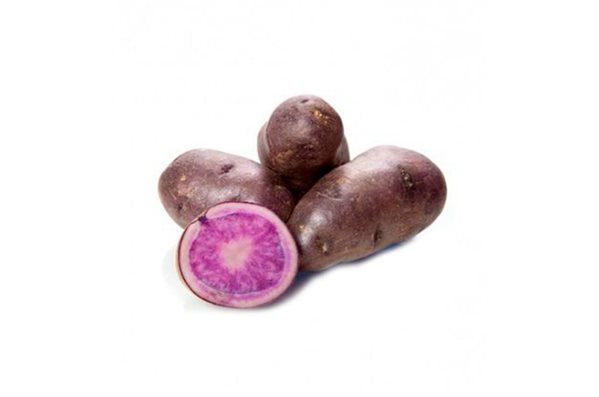My baskets
You still don't have anything in your shopping cart
My baskets
You still don't have anything in your shopping cart

{{getOldPrice()}}{{getPrice()}}
 ¡ Buying this product you get {{calculatedProductMenttos()}} menttos !
¡ Buying this product you get {{calculatedProductMenttos()}} menttos !


We are a group of small farmers committed to bringing our best freshly harvested products directly to your home, without intermediaries and at a fair price.
We work our land with love and responsibility, respecting the ripening times of each fruit and vegetable.
Hailing from different parts of Spain, we are the top producer of fruits and vegetables in the European Union.
Support small-scale producers and make your diet more sustainable.
Origin: Salamanca.
Origin: Salamanca
The Vitelotte potato or purple potato is so called because of its purplish hue and, in addition to the attractive recipes that can be prepared with it, it has an aroma, properties and texture that differentiate it from traditional potatoes
The skin of this tuber is darker and the flesh of a violet or bluish color somewhat lighter. Despite its apparent "rarity", the vitelotte potato has numerous uses in the kitchen and also has nutrients that are worth highlighting
Purple potatoes or Vitelotte are rich in antioxidants (especially thanks to their high content of anthocyanins, also responsible for giving them that particular color), a feature they share with other purple foods, such as blueberries (you can learn more about the color of vegetables and their nutrients in our article "The meaning of the color of food"). This is why this type of potato is effective in combating high cholesterol and other cardiovascular diseases
Another benefit of purple potatoes is that they have properties that help reduce hypertension, as revealed by a study conducted by the University of Scranton in Pennsylvania. In addition, it is also remarkable for its high vitamin C content and the presence of potassium and other nutrients in the skin, so cooking it unpeeled is also a good alternative
If we focus on its anti-inflammatory properties, it should be noted that the violet potatoes are also effective for ailments with these symptoms thanks to the aforementioned anthocyanins
Origin: Salamanca.
Origin: Salamanca
The Vitelotte potato or purple potato is so called because of its purplish hue and, in addition to the attractive recipes that can be prepared with it, it has an aroma, properties and texture that differentiate it from traditional potatoes
The skin of this tuber is darker and the flesh of a violet or bluish color somewhat lighter. Despite its apparent "rarity", the vitelotte potato has numerous uses in the kitchen and also has nutrients that are worth highlighting
Purple potatoes or Vitelotte are rich in antioxidants (especially thanks to their high content of anthocyanins, also responsible for giving them that particular color), a feature they share with other purple foods, such as blueberries (you can learn more about the color of vegetables and their nutrients in our article "The meaning of the color of food"). This is why this type of potato is effective in combating high cholesterol and other cardiovascular diseases
Another benefit of purple potatoes is that they have properties that help reduce hypertension, as revealed by a study conducted by the University of Scranton in Pennsylvania. In addition, it is also remarkable for its high vitamin C content and the presence of potassium and other nutrients in the skin, so cooking it unpeeled is also a good alternative
If we focus on its anti-inflammatory properties, it should be noted that the violet potatoes are also effective for ailments with these symptoms thanks to the aforementioned anthocyanins
